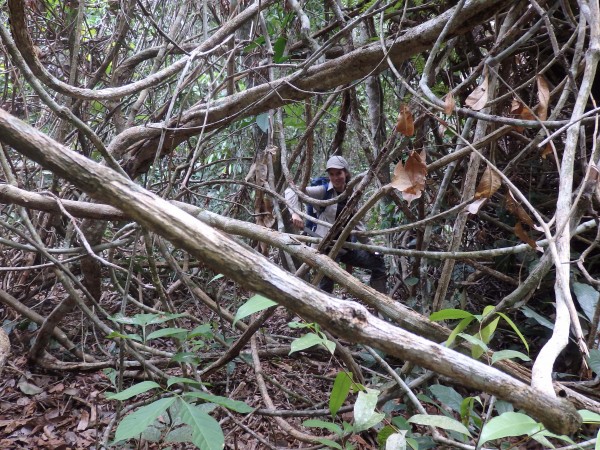PhD student Danielle Rappaport leads study that provides first comprehensive set of emissions factors for Amazon forest degradation
Understanding whether forest degradation from fire and logging represents an important source of carbon emissions from the Amazon region is essential to balance the global carbon budget, improve climate projections, and optimize efforts to reduce land-use emissions, such as REDD+. In the video below, Danielle Rappaport, PhD student, highlights how the newly published paper she led in Environmental Research Letters will contribute to improved carbon accounting of Amazon forest degradation.
{"preview_thumbnail":"/sites/geog.umd.edu/files/styles/video_embed_wysiwyg_preview/public/video_thumbnails/5cCs0jhosTc.jpg?itok=JxWx_75o","video_url":"https://youtu.be/5cCs0jhosTc","settings":{"responsive":1,"width":"854","height":"480","autoplay":0},"settings_summary":["Embedded Video (Responsive)."]}
Despite a decline in Brazilian Amazon deforestation by over 80% during the last decade, forest degradation from fire and logging has remained widespread along the Amazon arc of deforestation. Yet, incomplete information on the long-term carbon consequences of forest degradation has prevented full carbon accounting of fire and logging within monitoring, reporting, and verification (MRV) systems to support international climate mitigation efforts such as REDD+. The Rappaport et al. study directly targets these data gaps by providing a comprehensive assessment of the variability, magnitude, and persistence of degradation impacts on Amazon forest carbon stocks and habitat structure over 15-year time horizons. The published look-up table of emissions factors in their study represents an important step forward for better integrating degradation within carbon accounting systems, and reducing uncertainties in the regional Amazon carbon budget. They found that the carbon legacy of Amazon forest degradation was larger, more persistent, and more variable than previously reported. Given the slow recovery of degraded carbon stocks, and the ubiquity of forest degradation across the Amazon frontier, their results reaffirm the need to track multiple classes of degradation for REDD+ or other carbon accounting systems to achieve their mitigation goals.
The paper was published as part of a special issue on Carbon Monitoring Systems Research and Applications in collaboration with Douglas Morton (NASA GSFC), Marcos Longo (NASA JPL), Michael Keller (NASA JPL), Ralph Dubayah (UMD), and Maiza Nara dos-Santos (EMBRAPA).
Published on Thu, 06/07/2018 - 11:10


